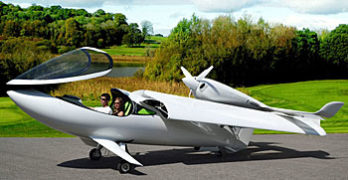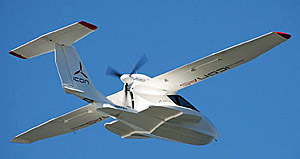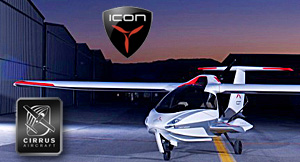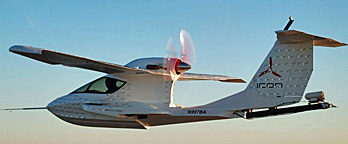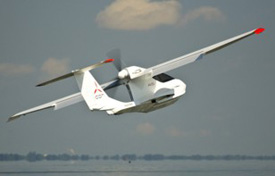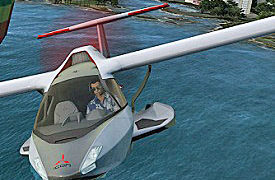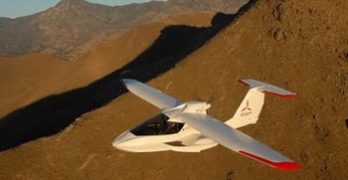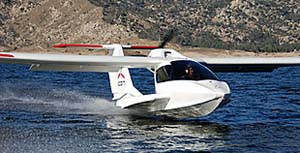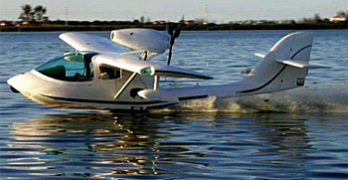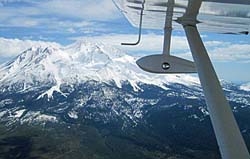I have several targets on my radar for follow-up at the big show that starts July 23rd. Here’s a beforehand review; details will follow. ||||
*** LSA seaplanes will generate plenty of interest, I think, with Icon‘s latest announcements and the dreamy new Lisa Akoya (photo). Both are superslick but not to be outdone by the SeaRey, which already has nearly 600 flying. SeaRey builder Progressive Aerodyne is hard at work on SLSA status. Adding the SeaMax into the mix, LSA seaplane enthusiasts have lots of great choices… and then come the floats for other planes. Lotus is back and Zenith is a trusted supplier of many years. You’ll be able to see both sets of floats in the LSA Mall. While you’re in the LSA Mall, you can check out AMT’s air conditioning for LSA plus the Belgium D Motor.
Discussion: LSA – Primary Category – Part 23
Since AirVenture 2012, I’ve been part of several discussions about the way — and reasons why — aircraft become certified. Sound boring? Yes and no. One way this might get your interest is to consider if Icon could join Cessna in going Primary Category instead of LSA. Disclaimer: I have no info about any such decision from Icon; this is merely a discussion. Perhaps even more to the point is the price of airplanes based on their certification cost.
*** COST Some informed estimates from knowledgeable persons suggests the cost of taking a fully designed, tested, and otherwise ready LSA through the full process of ASTM approval including the manufacturing process may be the cost of one airplane at retail. In other words, it might cost $125-150,000 to “certificate” a new LSA, after all design work and testing has been done. A weight shift trike might cost $80,000 as ASTM standards are somewhat simpler for those aircraft types.
Cirrus Returning to LSA? Well, Yes… for Icon
Icon Aircraft and Cirrus Aircraft announced a deal for the general aviation composite aircraft producer to build parts of the Icon A5 and the news introduced dates for the A5 to come to market.
*** Several years ago I traveled to Cirrus’ Duluth, Minnesota plant in the company of the Icon top leaders, including CEO Kirk Hawkins. In those days, Cirrus was seeking info to make decisions about their since-dropped LSA project called the SRS (photo). The Icon fellows were obviously impressed and the trip subsequently paid off.
*** “Cirrus has a global reputation for producing truly outstanding composite aircraft structures,” said Hawkins. “Their extensive experience, specifically in composite sandwich-production techniques, makes them an ideal production partner for Icon.” Cirrus has built more than 4,000 of its SR models. Returning the admiration, Cirrus CEO Dale Klapmeier said, “The Icon A5 is certainly the most innovative LSA on the market.” He added, “We believe that Light-Sport Aircraft and Sport Pilots are critically important to the growth and future of aviation.”
*** Like most airframe makers these days, Cirrus may not be using all its capacity.
Is “Spin Resistance” a Big Deal? Well, Yes!
On Memorial Day I had a chance to visit Icon Aircraft and spend some time with CEO Kirk Hawkins. We met seven years ago — just after the SP/LSA rule was released — near the beginning of his ambitions to create an entirely clean-sheet LSA amphibian.
*** Recently, Icon released the video appearing below to tout their spin resistant airframe (or SRA). Aviation and mainstream media jumped on this story and you may see other reports. I reported work toward this earlier and it’s been some time coming. Why the wait? From my first-hand experience with Cirrus Design and the development of their SR20, I have a bit of inside knowledge on this subject.
*** Cirrus also tried to grab the golden ring of SRA, as did their then-close competitor Columbia Aircraft (the two companies won their Part 23 Type Certificate within days of one another). Neither succeeded.
Icon Back on the Radar Screen
The splash heard ’round the LSA world continues to send out ripples, though it’s been years now since startup LSA maker Icon Aircraft first announced, with considerable marketing fanfare, its amphibious light sport amphibious project, the A5. *** Now comes word today from the company that’s it’s just completed a “demanding regimen of spin-resistance test flights. This milestone will make the A5 the first production aircraft in history to be designed to and completely comply with the Federal Aviation Administration’s full-envelope Part 23 spin-resistance standards developed from NASA’s work on the topic.” *** The lengthy release (a PDF file) goes on to enumerate the general cost in lives and hardware to civilian flying from stall/spin accidents, and cites its intentions to “design the A5 to the more difficult to achieve but safer standard of ‘spin resistant,’” as opposed to spin recoverable. *** Icon also conformed its testing regimen to the FAA Part 23 standard for certified aircraft.
Microsoft Embraces Light-Sport — New Flight!
Today, Microsoft announced the return of Flight Simulator, once one of the best-selling games on computers. Well, in truth, it’s no longer called Flight Simulator, rather simply “Flight.” *** In 2009 Microsoft abruptly dropped Flight Sim, leaving only the techy X-Plane for digital joystick jockeys. It’s way above my pay grade to understand while the Microsoft billionaires dropped a good seller but, who cares? It’s back with one Great Big Surprise: The iconic Icon A5 LSA seaplane is the default aircraft and shows even titanic Microsoft sees where the action is in aviation. The other two aircraft coming with Flight are an RV-6 and a Boeing Stearman, a significant change from the Cessna 172 or bizjet of Flight Sim. *** “Microsoft Flight drops the ‘Simulator’ label for what its developer unabashedly dubs a game — and a free one at that,” wrote Mark Hachman for PC Magazine online.
Of Amphibs and Aircars
Two of the best-promoted and most interesting LSA projects – and two of the most delayed getting to market – are back in the news. Icon Aircraft, a startup company created to produce the sexy composite A5 amphibian, just snagged $25 million in funding to help complete remaining design issues, tool up for production and begin cranking out airplanes. *** The company reports around 500 A5 orders on the books, at $139,000 per. A few months of flight testing remain to be completed, along with a new wing (reportedly for better spin resistance and directional stability), which means the production target date has been pushed back again, this time to the last quarter of 2012. *** Reported among the new crop of investors are Eric Schmidt of Google, Satyen Patel, formerly of Nike and Phil Condit, former CEO of Boeing, and some “undisclosed” Silicon Valley entrepreneurs. The initial infusion of greenbacks will be $15 million, with an option for $10 million more.
What Does It Take to Develop a SLSA? $25+ Million?
Most of the 118 Special Light-Sport Aircraft have been developed on a very modest budget… not that there’s anything wrong with that, of course. By far, the highest figure I’ve heard was about $2 million to create a new SLSA model. Yet that number doesn’t include starting a company from scratch and going all the way through to a new production facility with airplanes ready to fly away. So, what’s the total investment? Well, that depends on a thousand variables. It can be done quite inexpensively. Or, you can shoot for the moon. *** “Icon Aircraft recently closed a $25 million round of U.S. and U.K. venture financing from several high-profile consumer-product and aviation investors,” the company announced today. “The [money] takes Icon through the completion of the A5 development program and into the production phase.” *** So, one thing seems certain. Before gaining SLSA status or building a single production airplane, Icon is already the LSA market leader… in fund raising.
Landing a Seaplane on Water… with Wheels Down!
Landing on water with your wheels down is a confirmed aviation no-no. Land planes that try it often get flipped over upside down, when escaping the cabin becomes a real concern. Every seaplane pilot I know has a mantra he or she repeats, “I’m landing on water so the wheels must be up.” Most simply don’t want to make this mistake. You can land a seaplane or floatplane on land with the wheels up. The penalty is not as great (and you’ll certainly stop fast). But you violate the wheels-into-water rule at your peril. *** Some airplanes, like the new CTLS on amphib floats, or FPNA’s Capetown, or SeaRey have a light-alert system to help you and some manufacturers offer an audio alarm. Others use mirrors or have other warning systems. *** So why would someone land a SeaMax in water with the wheels down?
SeaMax Illustrates a Point About Niche LSA
One of the oft-repeated questions about this new thing called Light-Sport Aircraft is: “When will the shakeout occur? When will some of these 75 companies [who certified a SLSA] disappear… and which ones will fail?” *** First, my ability to see the future is no better than anyone else. We’ve lost a few suppliers (Taylorcraft, Urban Air, Spain’s CAG, Higher Class). But as a longtime observer of many sport aviation segments, here’s my view: (1) The current market leaders — the top dozen or so — will likely remain as they’ve already proven themselves. Remember, many overseas brands have world markets so they don’t rely 100% on U.S. sales. And should they fail, it will most likely be due to business practices, not their aircraft design. A few newcomers will enter the top ranks, including such legacy brands as Cessna (which has presently delivered so few Skycatchers that the giant manufacturer is not yet in the Top 20).
- « Previous Page
- 1
- …
- 5
- 6
- 7
- 8
- 9
- 10
- Next Page »


